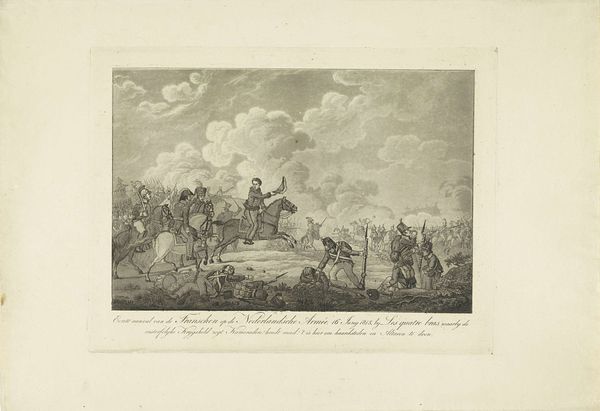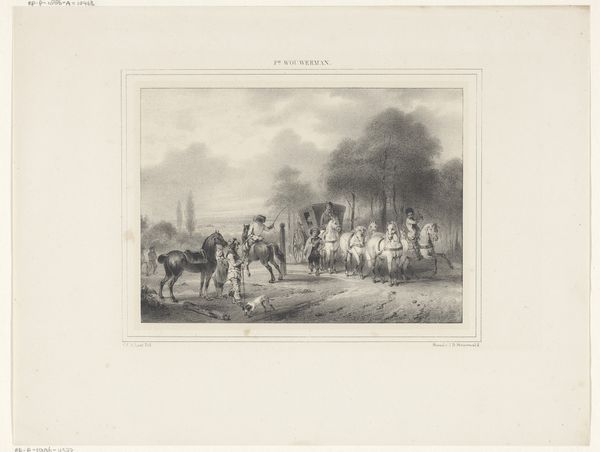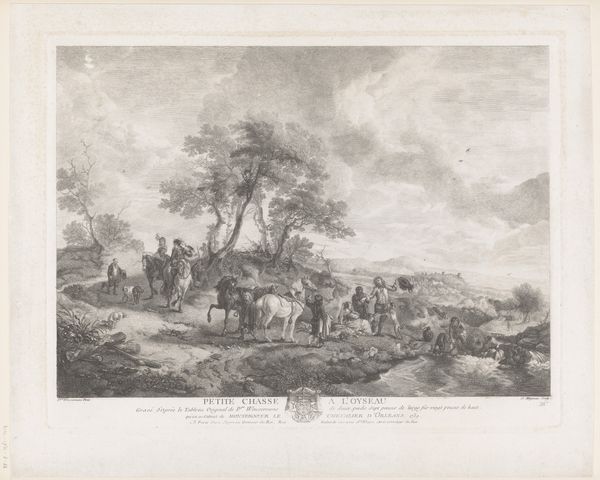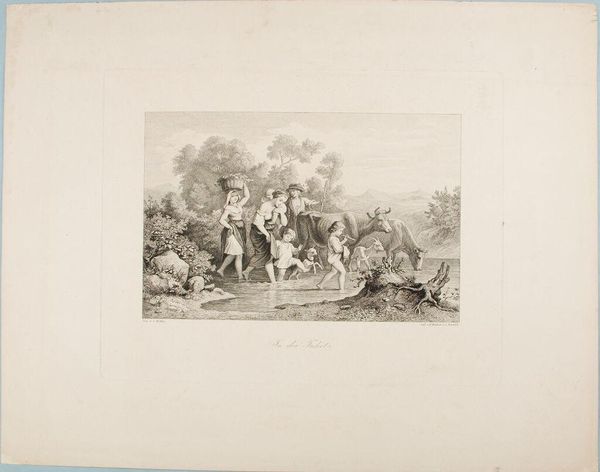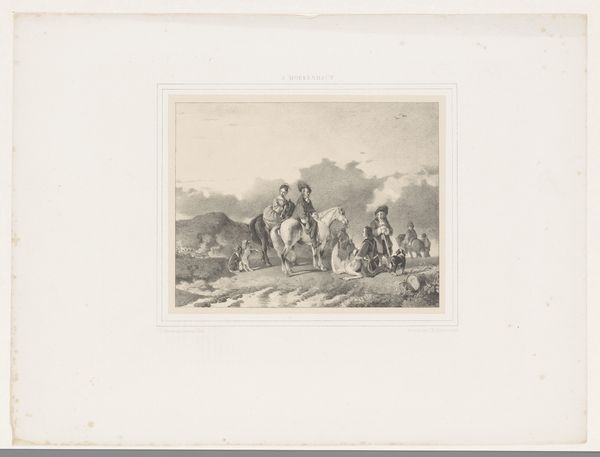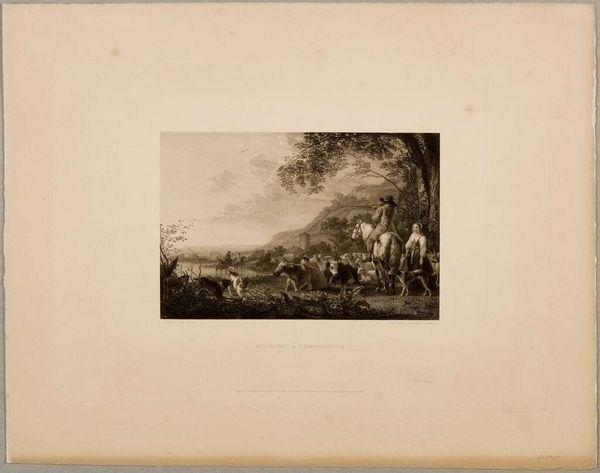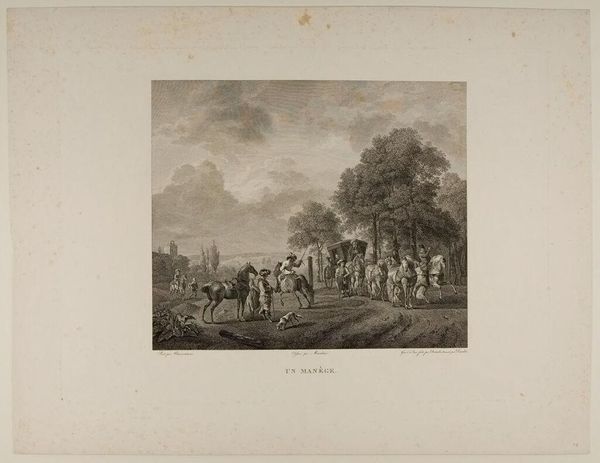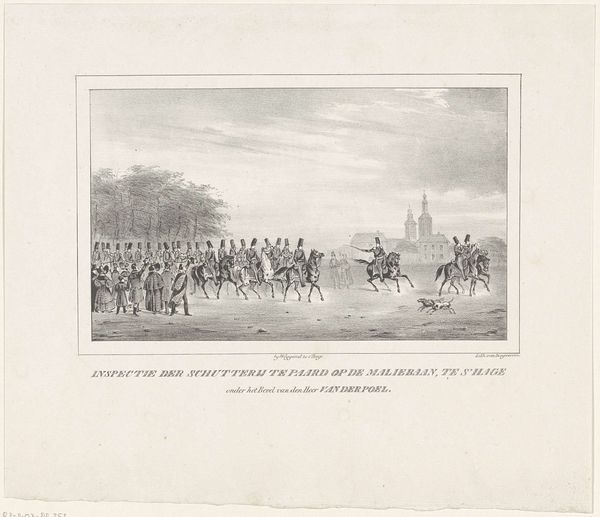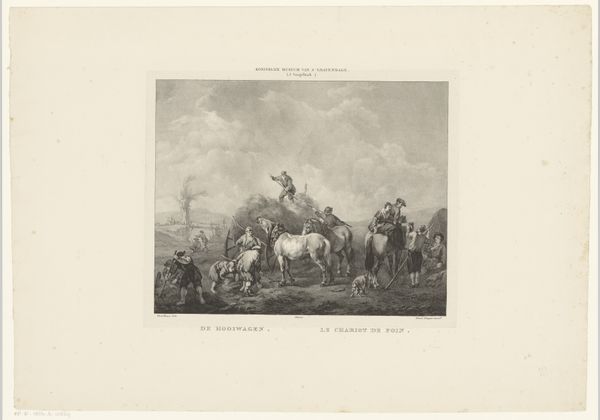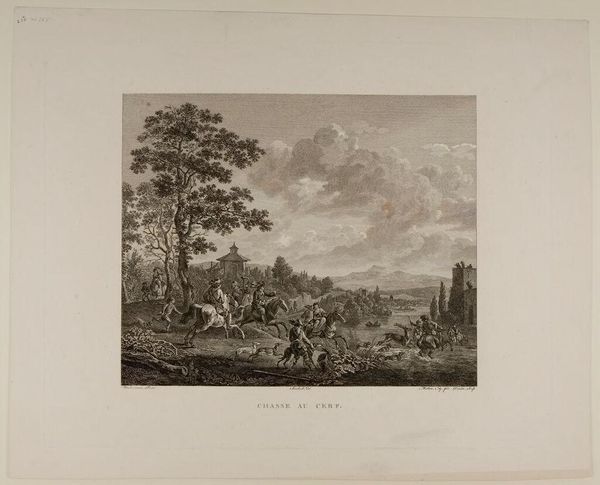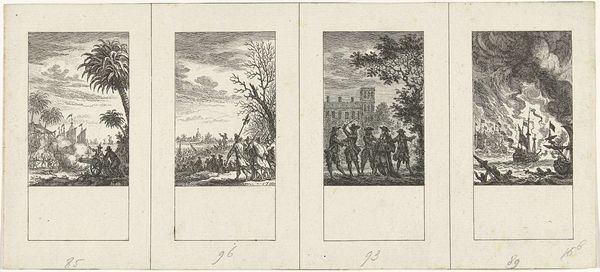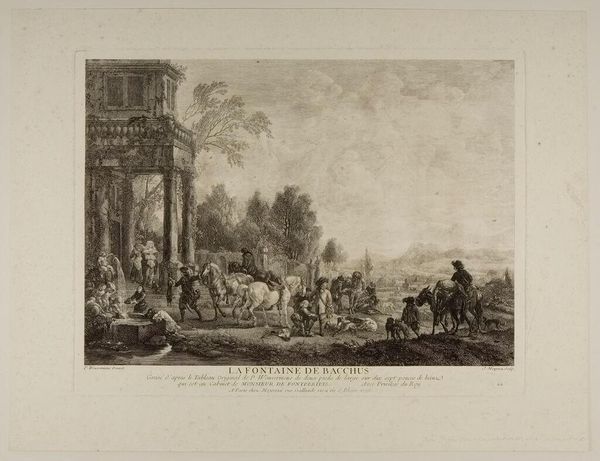
De vlucht van koning Leopold / Capitulatie van Leuven; tijdens de Tiendaagse Veldtocht, 1831 1831 - 1835
0:00
0:00
print, engraving
#
narrative-art
# print
#
landscape
#
figuration
#
cityscape
#
history-painting
#
engraving
Dimensions: height 206 mm, width 130 mm
Copyright: Rijks Museum: Open Domain
Curator: This engraving, created between 1831 and 1835 by Philippus Velijn, depicts two distinct scenes related to the Ten Days’ Campaign: "The Flight of King Leopold" and the "Capitulation of Leuven". Editor: A melancholic pall seems to hang over both compositions. In the upper panel, fleeing figures rush across a blasted landscape; below, defeated officers in elaborate garb huddle around a table, and even the surrounding vista appears to droop with resignation. Curator: Yes, but observe the contrasting approaches to spatial arrangement. In "The Flight," the vanishing point and recession draw the eye toward an uncertain horizon, suggesting continued retreat. The figures are secondary to this directional imperative. Editor: True, the symbols of power – a fleeing king and the surrendering army - are both images that feel particularly potent. Horses feature prominently; the rider as the representation of command. In the second panel we even see riders in defeat: what is that saying to us about the authority that has crumbled? Curator: Note how, technically, the medium of engraving allows Velijn to generate detailed, almost photorealistic renderings of each subject, from the uniforms to the folds in the carriage curtain. Consider this visual emphasis a compositional means of heightening contrast and underscoring the emotional tenor of both scenes. Editor: Indeed. One has to question if the artist felt this Belgian defeat so painfully that, some time after the event, it needed further reflection. Both scenes create an interplay of loss – the physical loss of land, the psychological blow to national identity. These aren’t simple historical records; they’re elegies to what was and warnings of what might still be. Curator: Precisely. The rigorous formal structure invites contemplation far beyond its immediate subject. A subtle commentary on leadership, perhaps? Editor: Well, perhaps both the iconographical charge and compositional elements add considerable layers for the modern viewer. Curator: Undoubtedly. I'm reminded of the power inherent in form itself.
Comments
No comments
Be the first to comment and join the conversation on the ultimate creative platform.
